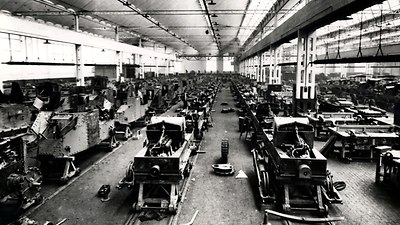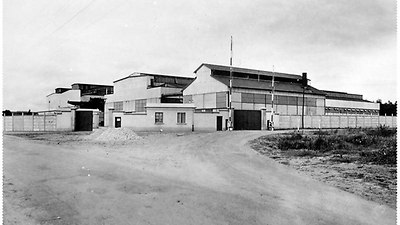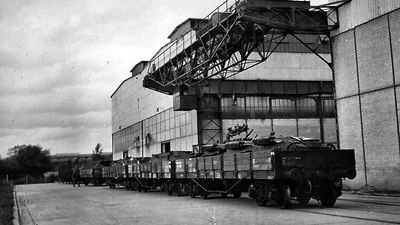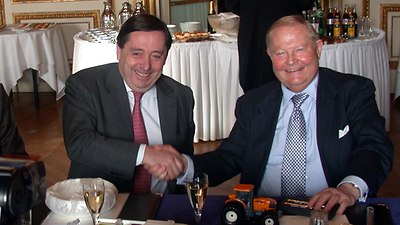

Renault Agriculture

Where it all started
In 1898, Louis Renault, then 20 years old, built his first small car in a garden shed in the region around Paris. In 1913, the Renault factory already reached the milestone of 10,000 cars produced per year. In the same year, 25-year-old August Claas founded CLAAS.

After the end of World War I, Renault used its experience in the manufacture of tanks to develop agricultural vehicles. Renault’s Division 14, which had been responsible for the FT tank, developed the company’s first commercial tractor, the Renault GP, which was driven by a four-cylinder engine similar to that in the FT tank and had a chain drive. Back in 1918, tractors were assembled in the Renault factory in Billancourt and tested on Louis Renault’s farm in Herqueville in Normandy.

The story of Paris and Le Mans
Louis Renault chose the Le Mans site in December 1918 for a preliminary project, which not only comprised the factory he wanted to establish, but also addressed social issues by providing housing and leisure facilities as well as a railway branch.
The Le Mans factory was established in 1938, and it continues to be home to the CLAAS tractor factory to this day. The first tractors came off the production line in 1942, and by 1950 Renault had already gained a market share of 58 percent in the country’s total tractor production, making it France’s largest tractor manufacturer by far.

When the German company Porsche-Diesel decided to discontinue its production in 1962, Renault signed a contract with Porsche-Diesel and started to distribute Renault tractors in Germany. At the same time, Renault ensured the continued supply of spare parts for Porsche-Diesel tractors as well as MAN and Normag-Zorge tractors.
In 1973, Renault Tractor relocated its headquarters from Pont de Sèvres to Vélizy, where our research and development centre is today.
In 1997, Renault Agriculture established a 50/50 joint venture with Massey Ferguson (later renamed AGCO). The resulting company, GIMA, located in Beauvais, manufactured rear axles and gearboxes, which bolstered Renault’s competitiveness. GIMA continues to produce gearboxes for CLAAS Tractor, among them the QUADRISHIFT and HEXASHIFT.

Ready for the new millennium.
In 2003, the tractor manufacturer Renault Agriculture was for sale. At the time, Renault Agriculture was a medium-sized manufacturer that offered a good opportunity for CLAAS to enter the mass market segment of standard tractors. CLAAS acted quickly and decisively, and Helmut Claas and Patrick Faure signed their pivotal agreement ahead of the SIMA 2003 trade fair in France.
Five years later, the family business CLAAS acquired the remaining 20 percent of shares and took full ownership of Renault Agriculture SAS. As a result, the French subsidiary Renault Agriculture, which was the division responsible for developing and manufacturing tractors within the CLAAS Group, was renamed CLAAS Tractor SAS.
Amicale du Tracteur Renault
Since 1997, a handful of enthusiasts have been working on collating and cataloguing material on all RENAULT tractors built since 1918, including technical specifications, brochures, advertisements and much more in order to trace the company’s history. This remarkable wealth of information is available on two discs and to some extent also online, much to the delight of fans and enthusiasts. There are many collectors who are passionate about agricultural tractors, as is evidenced by numerous museums, specialist magazines, exhibitions, stands at shows and trade fairs and demonstrations at field days.






